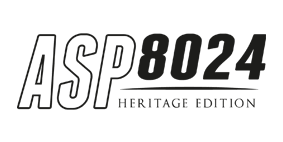Heritage Sound
The ASP8024 Heritage Edition largely features the same smooth, clean sound as the original Audient console design from 1997. However we’ve made several key improvements in crucial areas to take the console to the next level and really stand out from the crowd.
Discrete John Hardy 990C Mix Amps
Tone where it matters
The mix bus summing amplifier on a console is the “bottleneck” or the most crucial part of the console design. We’ve upgraded our summing amplifiers to the renowned American John Hardy 990C amplifiers, as designed by legend Deane Jensen in the 70’s.
These discrete transistor amplifiers are the “American Muscle Car” of opamp design and offer increased dynamics, sweet spot and punch, whilst simultaneously halving the noise of the console – for example a 72CH now measures like an old 36CH!


Retro Iron Variable Mix Bus
The variable mix bus
Moving through the signal path and coming after the muscular output of the 990C opamps – the Heritage Edition provides new tonal options with the Retro Iron output card. Before we get into the details lets have a look at Retro Iron’s inspiration.
The Legacy
The start of something special
Fitted as standard, the Retro Iron card is inspired by two of David Dearden’s first console tech experiences at Advision Studios, London circa 1970. Here David joined the team as in-house tech and engineer to specify, build and maintain equipment for the studio, with notable session clients such as Emerson, Lake & Palmer, Shirley Bassey, David Bowie and many more.
Two consoles were prevalent during David’s first few years at Advision – one of British heritage and one American.

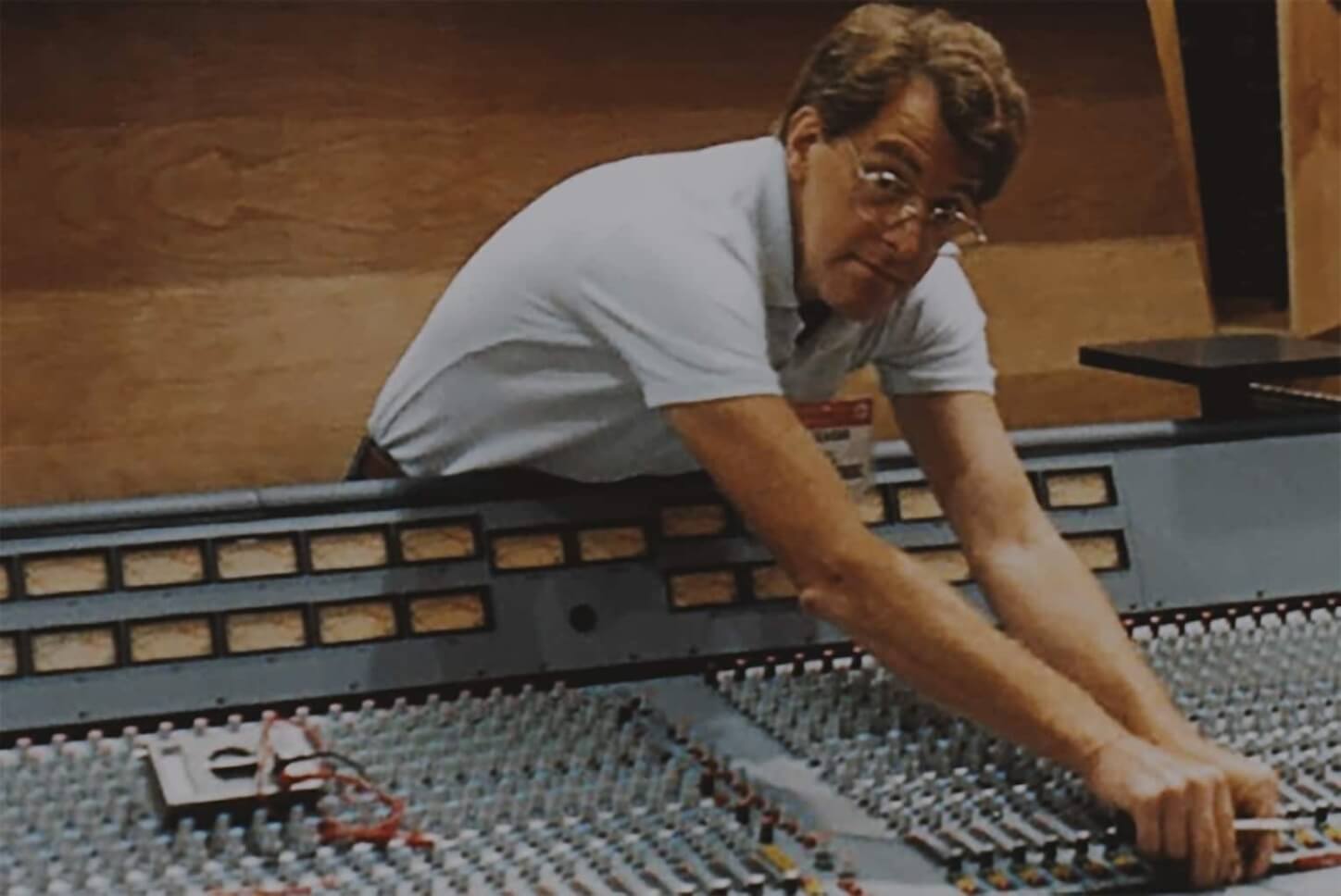
The British console was largely class-A but had large amounts of high frequency phase shift (it sounded “smeary” according to David) but did have a weighty low frequency response from it’s large iron transformers. The American console on the other hand had clean, clear midrange with sparkle and speed, largely running class-A/B with smaller but more transparent steel/nickel transformers. David recounts several tales of modifying the amplifiers in this U.S style console to retain smooth high frequency details and speed when using several amp stages in series within the console signal path, whilst also recounting tales of shock when measuring the phase shift in the British design! Both had their merits.
Design Inspiration
Where it all began
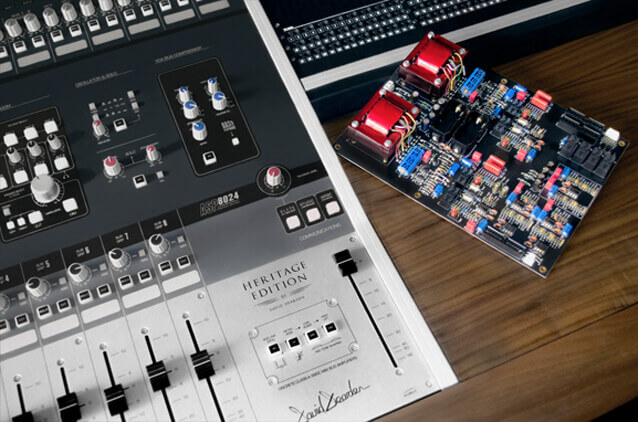
Our very own Retro Iron card is inspired by both consoles – a blend of the best bits if you wish! The discrete class-A/B transistor amplifiers are based upon the American console, but with each transistor selected by ear to offer incredible detail, speed and subtle harmonic excitement of 2nd order distortion.
These amplifiers are coupled to large un-gapped Carnhill transformers made in the UK to our specification to improve upon the response found in the original British console. These transformers are driven with increased size complementary pairs on robust heatsinking so that they are always controlled, over-engineered and free from sluggish D.C core saturation.

When these two stages combine they produce a punchy, weighty sound that is not murky or slow, but harmonically exciting and ever-so-slightly gritty. Perfect for adding character to your mixes, where the output transformers provide just the right growl in the lower midrange for guitars.
Operating ahead of the discrete amplifiers, there is a powerful and delicately tuned EQ that changes the energy levels delivered to the harmonic output stage to sweeten and “tilt” the response of the console to the style of music you are working on. This EQ is based upon legendary Baxandall peaking filters with broad curves, using high quality capacitors and exceedingly smooth, low distortion modern amplifiers – the LM4562.
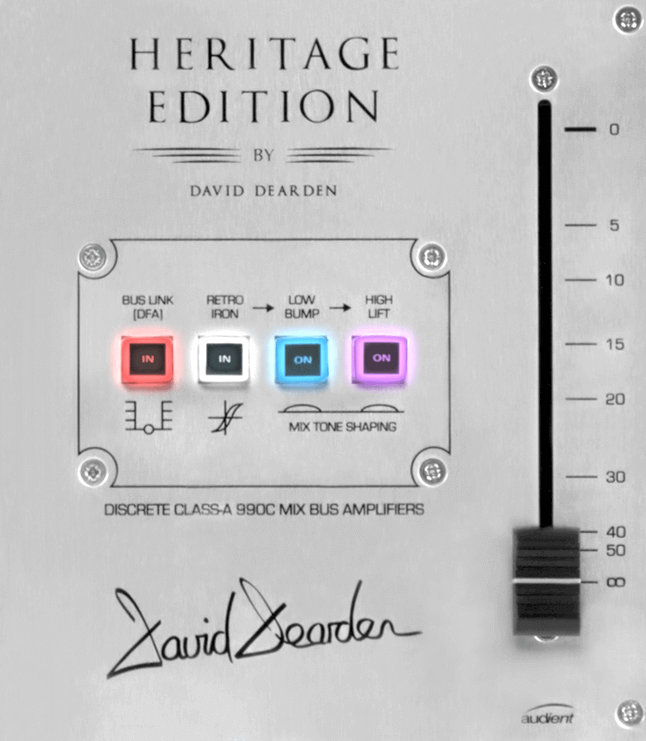
Tone Shaping
Take your mix to the next level
Retro Iron is engaged with the switches in the master fader section, and when inserted into the mix bus signal path, provides a beastly headroom of +28dBu into 600Ω at the mix insert send output, perfect for driving a vintage mix bus EQ or Fairchild! You should try engaging the Retro Iron features half-way through a mix to give you a little lift!
There are 4 modes of “tone shaping” operation, controlled by the 3 switches on the right hand side of the master fader panel.
RETRO IRON
RETRO IRON + LOW BUMP
RETRO IRON + AIR LIFT
RETRO IRON + LOW BUMP + AIR LIFT
Mode 1 adds the discrete circuitry & transformers to the mixbus and provides delicate enhancement and punch. Mode 2 increases the weight of the low end at 60Hz, resulting in more core saturation and a fatter response that suits Hip-Hop and EDM. Mode 3 opens up the top of the console for a pretty sound that really suits Ballads and Pop music, whilst Mode 4 scoops the midrange slightly and adds weight to the lows and sparkle to the highs, which really loves Rock music. Experiment, sometimes you might leave the entire card off and enjoy the tight, clean response of just the 990C mix amps!
These “tone shaping” options should be looked at as creative mix enhancement tools or as a way to offer simple corrective rebalancing if you find that you always mix a “bit bass light” or a “bit bright”.



The vintage circuitry uses period correct axial BC electrolytic capacitors, high quality polypropylene film bypass capacitors from Wima, along with expensive Polystyrene high frequency and Panasonic Polyester EQ capacitors for seriously tight bass & 3D air.
For the tweakers we’ve put jumpers on the circuit board so that you can set 0.5, 1, 2 or 3dB EQ levels for the Low Bump and High Lift modes – the card is set default to 2dB but due to the filter design this is not too aggressive and perfectly suited to lots of programme material and styles.
A Modern Classic Redefined
Real heritage at your fingertips

David Dearden proudly launching the Heritage Edition at Musikmesse 2016, 46 years after starting at Advision Studios and 19 years after designing the first incarnation of the ASP8024 console – now that’s some heritage.
Heritage Sound
The ASP8024 Heritage Edition largely features the same smooth, clean sound as the original Audient console design from 1997. However we’ve made several key improvements in crucial areas to take the console to the next level and really stand out from the crowd.
Discrete John Hardy 990C Mix Amps
Tone where it matters

The mix bus summing amplifier on a console is the “bottleneck” or the most crucial part of the console design. We’ve upgraded our summing amplifiers to the renowned American John Hardy 990C amplifiers, as designed by legend Deane Jensen in the 70’s.
These discrete transistor amplifiers are the “American Muscle Car” of opamp design and offer increased dynamics, sweet spot and punch, whilst simultaneously halving the noise of the console – for example a 72CH now measures like an old 36CH!
Retro Iron Variable Mix Bus
The variable mix bus

Moving through the signal path and coming after the muscular output of the 990C opamps – the Heritage Edition provides new tonal options with the Retro Iron output card. Before we get into the details lets have a look at Retro Iron’s inspiration.
The Legacy
The start of something special

Fitted as standard, the Retro Iron card is inspired by two of David Dearden’s first console tech experiences at Advision Studios, London circa 1970. Here David joined the team as in-house tech and engineer to specify, build and maintain equipment for the studio, with notable session clients such as Emerson, Lake & Palmer, Shirley Bassey, David Bowie and many more.
Two consoles were prevalent during David’s first few years at Advision – one of British heritage and one American.

The British console was largely class-A but had large amounts of high frequency phase shift (it sounded “smeary” according to David) but did have a weighty low frequency response from it’s large iron transformers.
The American console on the other hand had clean, clear midrange with sparkle and speed, largely running class-A/B with smaller but more transparent steel/nickel transformers.
David recounts several tales of modifying the amplifiers in this U.S style console to retain smooth high frequency details and speed when using several amp stages in series within the console signal path, whilst also recounting tales of shock when measuring the phase shift in the British design! Both had their merits.
Design Inspiration
Where it all began

Our very own Retro Iron card is inspired by both consoles – a blend of the best bits if you wish! The discrete class-A/B transistor amplifiers are based upon the American console, but with each transistor selected by ear to offer incredible detail, speed and subtle harmonic excitement of 2nd order distortion.
These amplifiers are coupled to large un-gapped Carnhill transformers made in the UK to our specification to improve upon the response found in the original British console. These transformers are driven with increased size complementary pairs on robust heatsinking so that they are always controlled, over-engineered and free from sluggish D.C core saturation.
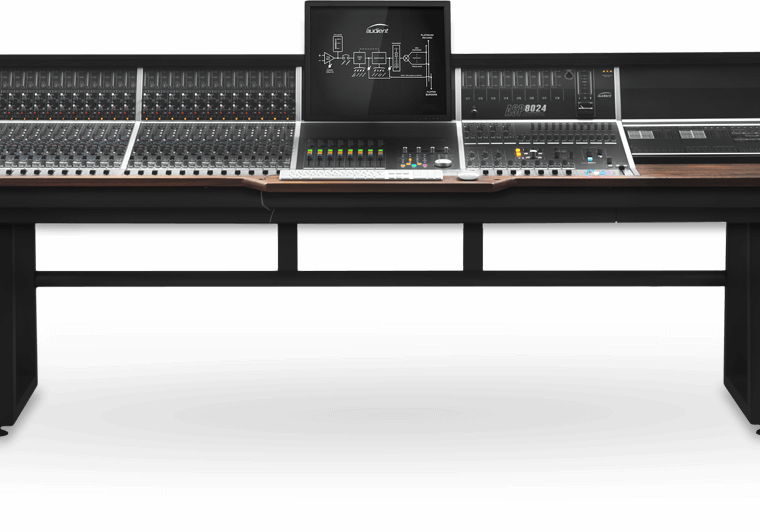
When these two stages combine they produce a punchy, weighty sound that is not murky or slow, but harmonically exciting and ever-so-slightly gritty. Perfect for adding character to your mixes, where the output transformers provide just the right growl in the lower midrange for guitars.
Operating ahead of the discrete amplifiers, there is a powerful and delicately tuned EQ that changes the energy levels delivered to the harmonic output stage to sweeten and “tilt” the response of the console to the style of music you are working on. This EQ is based upon legendary Baxandall peaking filters with broad curves, using high quality capacitors and exceedingly smooth, low distortion modern amplifiers – the LM4562.
Tone Shaping
Take your mix to the next level

Retro Iron is engaged with the switches in the master fader section, and when inserted into the mix bus signal path, provides a beastly headroom of +28dBu into 600Ω at the mix insert send output, perfect for driving a vintage mix bus EQ or Fairchild! You should try engaging the Retro Iron features half-way through a mix to give you a little lift!
There are 4 modes of “tone shaping” operation, controlled by the 3 switches on the right hand side of the master fader panel.

The vintage circuitry uses period correct axial BC electrolytic capacitors, high quality polypropylene film bypass capacitors from Wima, along with expensive Polystyrene high frequency and Panasonic Polyester EQ capacitors for seriously tight bass & 3D air.

For the tweakers we’ve put jumpers on the circuit board so that you can set 0.5, 1, 2 or 3dB EQ levels for the Low Bump and High Lift modes – the card is set default to 2dB but due to the filter design this is not too aggressive and perfectly suited to lots of programme material and styles.
A Modern Classic Redefined
Real heritage at your fingertips

David Dearden proudly launching the Heritage Edition at Musikmesse 2016, 46 years after starting at Advision Studios and 19 years after designing the first incarnation of the ASP8024 console – now that’s some heritage.
